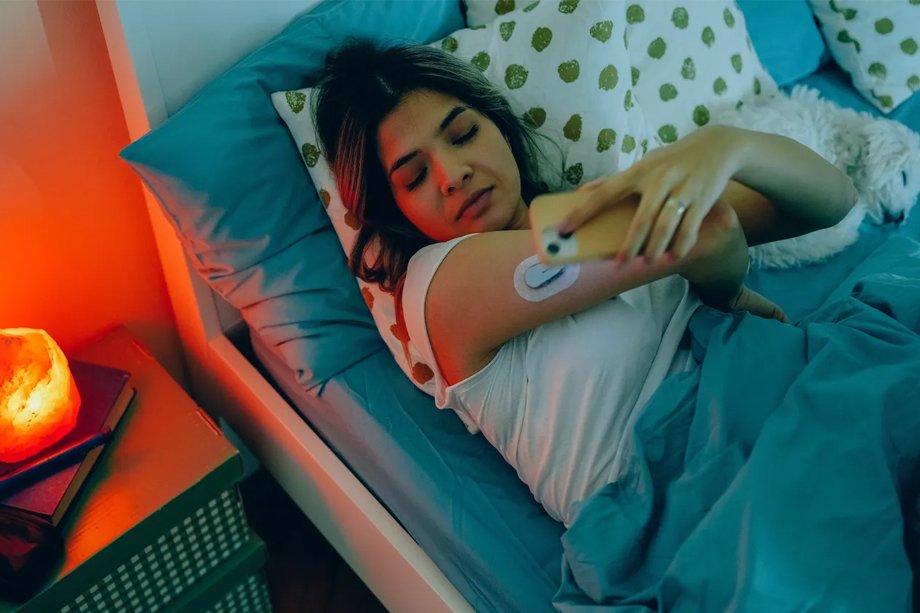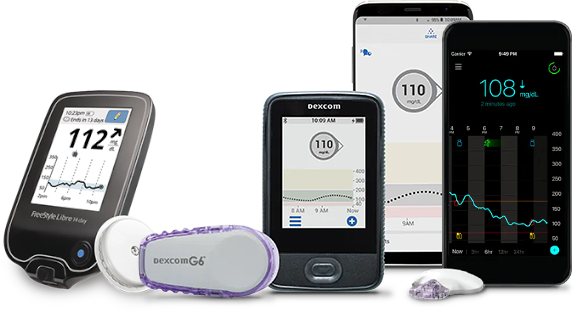Freestyle Libre Sensor Problems: Fixes and Replacement Options?
The Freestyle Libre sensor has made managing diabetes easier by allowing continuous glucose monitoring (CGM) without the hassle of frequent finger pricks. It’s a game-changer for many, but like any device, it can sometimes stop working properly. Knowing how to troubleshoot issues and get a replacement when needed can save you time and stress. In this guide, we’ll explain how to spot problems with your sensor, fix common issues, and get a replacement if necessary, so you can keep managing your glucose levels smoothly. What is Freestyle Libre Sensor? The Freestyle Libre Sensor is a continuous glucose monitoring (CGM) device designed to help individuals with diabetes keep track of their glucose levels throughout the day. It works by applying the sensor to the back of the upper arm, where a tiny filament is painlessly inserted just under the skin to measure glucose levels in the interstitial fluid. Users can easily access real-time glucose readings by scanning the sensor with a handheld reader or compatible smartphone. The Freestyle Libre family offers several versions, each with unique features to enhance diabetes management: Freestyle Libre 2: This version includes optional alarms to notify users when their glucose levels are too high or too low, providing added safety and peace of mind. Freestyle Libre 2 Plus: A more advanced model that delivers even greater accuracy and enhanced features for precision monitoring. Freestyle Libre 3: Compact and discreet, this version offers continuous real-time glucose monitoring with a smaller, more comfortable design. Freestyle Libre 3 Plus: This model integrates advanced digital data tracking, making it easier for users to manage and monitor their glucose levels effectively. Each new version builds on the strengths of the previous one, delivering improved convenience, accuracy, and control for users to better manage their diabetes. Reasons for Freestyle Libre Sensor Issues Freestyle Libre sensors are designed to provide reliable glucose monitoring, but occasionally, they may encounter issues requiring troubleshooting or even replacement. Here are some common reasons why a sensor might fail: Improper Application: If the sensor isn’t applied correctly to the skin, it may not function as intended. Ensuring proper placement is crucial for accurate readings. Sensor Detachment: The adhesive may lose its grip, causing the sensor to loosen or fall off prematurely. Technical Faults: Internal malfunctions in the sensor can lead to inaccurate or inconsistent glucose readings. User Mistakes: Errors during setup or scanning, such as incorrect use of the handheld reader or smartphone, can make the sensor appear faulty. Environmental Conditions: Factors like excessive sweating, accidental impacts, or prolonged exposure to water beyond the recommended limits can damage the sensor. Understanding these potential issues can help users take preventive measures and address problems promptly, ensuring seamless glucose monitoring. Indications That Your Freestyle Libre Sensor May Be Malfunctioning It’s important to recognize when your Freestyle Libre sensor isn’t working properly. Here are some common signs to watch out for: Inconsistent Readings: If your sensor’s glucose readings often differ significantly from finger-stick blood glucose tests, this could indicate a problem. Error Messages: Your reader or smartphone app may display error messages, signaling that the sensor isn’t functioning as expected. No Readings After Scanning: If you’re unable to get any glucose data despite applying and scanning the sensor correctly, it might not be working. Early Detachment: If the sensor comes off before its intended duration of use, this could disrupt its ability to monitor glucose levels. Recognizing these indications early can help you address sensor issues promptly, ensuring uninterrupted glucose monitoring. Steps to Request a Freestyle Libre Sensor Replacement If your Freestyle Libre sensor is not working and troubleshooting hasn’t resolved the issue, you can request a replacement by following these steps: 1. Gather Essential Information Before contacting customer support, make sure to have the following details ready: Sensor Details: Locate the lot number and expiration date, usually found on the sensor box or adhesive applicator. Error Logs: Note any error codes or messages shown on your reader or smartphone app. Timeline: Record when you applied the sensor and when the issue started. Troubleshooting a Non-Working Freestyle Libre 2 Sensor If your Freestyle Libre 2 sensor isn’t working, try these troubleshooting steps: 1️⃣ Check for Common Issues Error Message? Note any error codes displayed on your reader or phone app. Sensor Not Scanning? Try restarting your phone or reader. No Readings? Ensure the sensor is properly attached and hasn’t loosened. Inconsistent Readings? Wait 60 minutes after application, as the sensor needs time to warm up. 2️⃣ Restart the Device/App If you’re using a phone, restart the app or reboot your phone. If using the Freestyle Libre 2 reader, turn it off and on again. 3️⃣ Check Sensor Placement Make sure it’s placed on the back of your upper arm as instructed. If it has fallen off or is loose, you’ll need to replace it. 4️⃣ Scan with Another Device Try using a different phone (if using the LibreLink app). Check if the Freestyle Libre 2 reader can detect the sensor. 5️⃣ Wait and Try Again If it’s newly applied, wait an hour before scanning again. 6️⃣ Replace the Sensor If it’s still not working, you might need to apply a new sensor. If it fails before 14 days, you may be eligible for a free replacement from Abbott. Get Expert Assistance from Med Reliance DME If you’re experiencing issues with your Freestyle Libre 2 sensor, don’t worry—help is available. At Med Reliance DME, our experts are here to guide you through troubleshooting steps and provide support for any sensor-related concerns. Whether it’s a device malfunction, incorrect readings, or connectivity issues, our knowledgeable team can assist you in finding a solution. If your sensor is defective, we can also help you navigate the replacement process with your supplier or Abbott directly. Our goal is to ensure you have a seamless experience managing your glucose levels with reliable equipment. You can reach out to Med Reliance DME for expert guidance and personalized support! or Contact the abbott Support MED RELIANCE DME LLC Email: info@medreliancedme.com



